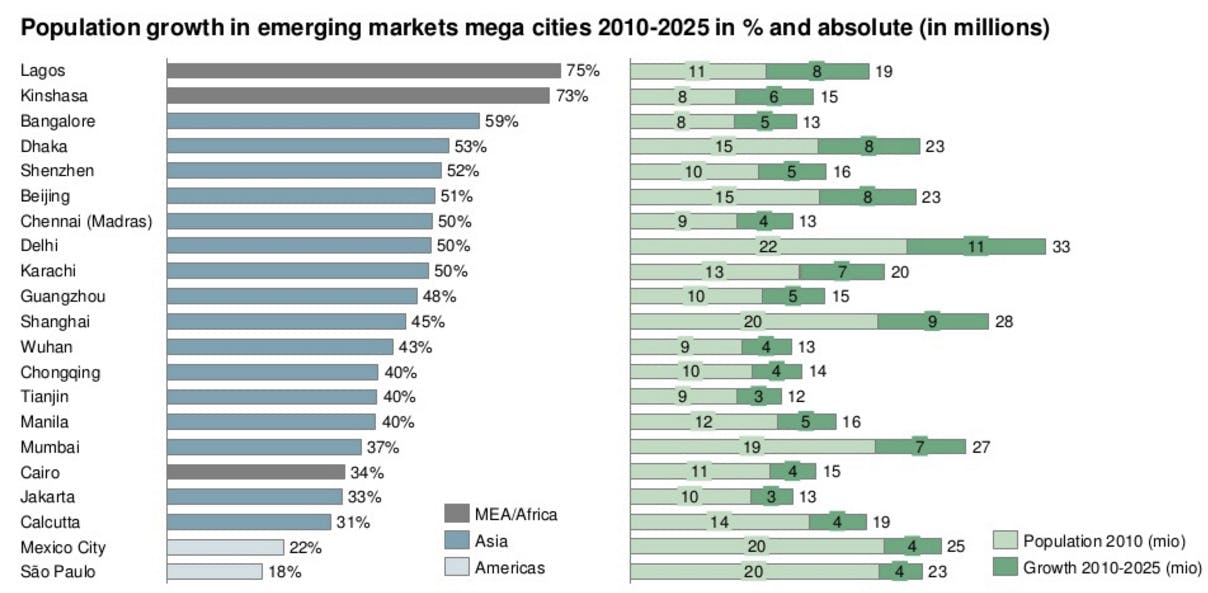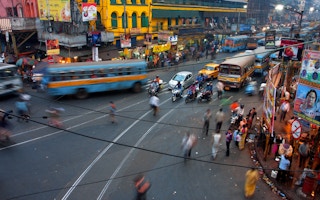If you have recently transited through any major airports in Asia, it’ll be hard not to go pass a glossy billboard pointing to just how fast cities in this region are changing. But behind the world’s-best airports, glitzy new residential towers and state-of-the-art transport infrastructure lie a much bigger desire than just building beautiful cities - it is to build smart cities.
Here in Asia Pacific, the momentum has been fever pitch, fuelled primarily by one critical imperative: the huge population explosion. According to the Boston Consulting Group, Asia happens to be home to 16 of the top 21 cities expected to experience the highest population growth.
In India, the government of Prime Minister Narendra Modi has outlined a vision to develop 100 smart cities as new satellite towns or by modernising existing mid-sized cities. In January, it announced the names of the first 20 urban areas to be developed, with a proposed investment of Rs 50,802 crores (US$7.5 billion) over a five-year period.
In China, authorities say smart city technology is a key national policy to help drive the country’s rapid urbanisation. Efficiency in smart city development has even been adopted as a performance benchmark for local officials in some provinces as the country positions itself for a leadership role in smart city technology. According to a report in China Daily, the country’s accumulated investment in smart cities is on track to exceed 2 trillion yuan (US$322 billion) by 2025.
Singapore is another front-runner in the smart cities race, topping IDC Asia Pacific’s Smart Cities chart in 2015. Last year, the country announced about S$2.2 billion (US$1.6 billion) worth of government ICT tenders, with key areas of procurement focused on realising the country’s Smart Nation vision, such as the development of the Smart Nation Platform that will enable public agencies to enhance their situational awareness and to deliver anticipatory responses and services to businesses and individuals.
According to research estimates from Frost & Sullivan, smart cities present a combined market potential of US$1.5 trillion globally by 2020, across segments such as energy, transportation, healthcare, building, infrastructure, and governance. This creates vast market opportunities in this part of the world for companies prepared to invest.
Across all these initiatives, the key to unlocking the potential of a smart city lies in the merging of the physical and digital worlds, the combination of operational technology (OT) and information technology (IT) to create an Internet of Everything that will generate vast amounts of data at a faster pace than anything we have seen in the history of digitisation to date. All this data – machine data, business data and human data – will have to be analysed at incredible speed to deliver the insights and enable the responses and services required for a smart city.

Asia happens to be home to 16 of the top 21 cities expected to experience the highest population growth. Boston Consulting Group
So what does this mean from an IT infrastructure perspective? And more importantly, are we ready?
The standard hyper-converged infrastructure that we have today is able to ingest and manage data through virtual machines (VMs) and is great for supporting Infrastructure-as-a-Service and applications on demand. However, with data in each VM contained, it is not sharable between different uses. We also have big data analytics and Hadoop that can manage and process data in parallel, but only when it has been copied into the Hadoop Distributed File System.
What is needed for smart city applications is a new scale-out architecture that combines both to avoid the creation of data silos, while avoiding time-consuming and expensive ETL (Extract Translate Load) operations by maintaining data in place. Such a platform will be able to ingest data at speed, spin up VMs on demand to execute applications that share data between all VMs, and execute Hadoop jobs directly at the data source alongside others.
“
According to research estimates from Frost & Sullivan, smart cities present a combined market potential of US$1.5 trillion globally by 2020, across segments such as energy, transportation, healthcare, building, infrastructure, and governance.
Technology companies will play a key role in delivering this new architecture and meeting other requirements of a smart city. Governments do not have all the experience nor funding to embark on these initiatives on their own so partnering will be a necessity for success. Companies like Hitachi, which have been involved in multiple levels of the smart city supply chain, will be the catalysts for making smart cities a reality.
Hitachi has invested some $1 billion in IoT and big data R&D to date, and is a leader in data analytics and technology patents. It is bringing its entire arsenal to deliver smart city solutions that address urban challenges such as healthcare, transportation, energy, logistics and many more. With end-to-end expertise and partnerships covering everything from the underlying technology products to the delivery of services, smart cities will be built by these smart companies.
Adrian De Luca is the head of Data Centre Solutions and CTO for Hitachi Data Systems in Asia Pacific. This piece was written exclusively for Eco-Business.


















